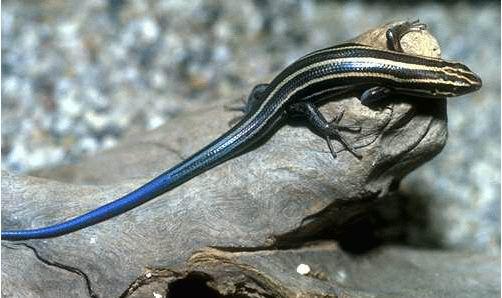Long Tailed Grass Lizard
Long Tailed Lizard, Grass Lizard, Long - Tail Grass Lizard Scientific Name: Takydromus sexlineatus
Tue, 15th July, 2025 - 11:31 pm GMT
Sponsor Ads:

Alternative Name
Long Tailed Lizard, Grass Lizard, Long - Tail Grass Lizard Scientific Name: Takydromus sexlineatusBasic Info
When full grown, Long Tailed Grass Lizards can reach up to ten inches in length. They are generally greenish brown to brown, though some have a reddish tint, especially toward their tails. The undersides are usually lighter green in color. Usually thin, well-defined, white-bordered brown stripes are evident over the length of the Long Tailed Grass Lizard. Generally, males have thicker tail bases than females, and may have lighter spots over darker colored stripes. The tails are indeed long; in fact, some Long Tailed Grass Lizards have tails that are longer than their bodies are. Some Long-tailed Grass Lizards may also have a whitish belly with one long stripe on each side of their bodies. The stripes start at the nostril, around the eyes, then gets thicker toward the side. Soon the stripe narrows toward the long tail. Once it is near the tip, the stripe covers the tail. Some Long-tailed Grass Lizards also have either a brown back or a black back. Their legs could be bright red or a scarlet red with blackish spots.
Health
Long Tailed Grass Lizards should be kept in terrariums of at least 15 gallons in size with screen lids. Full spectrum UV lighting is recommended. The basking spot should be between 90 and 95 degrees Fahrenheit, and the ambient temperature of the tank should be in the low 80s during the day and the low 70s at night. Humidity should be around 70 percent, and for this reason, substrates like peat moss or bark chips may work nicely. Daily misting can also help. The terrarium should afford lots of hiding opportunities and often live plants may provide humidity as well as hiding places. Branches for climbing should be available. They should be fed three to four times each week, though growing juveniles should be fed daily. In captivity, Long Tailed Grass Lizards eat insects like crickets, house flies, fruit flies, superworms, waxworms, butterworms and other grubs. Make sure the diet is varied as a diet consisting only of grubs may not be nutritionally complete. Breeding Long Tailed Grass Lizards usually lay two to three eggs. Mating may be stimulated through use of full spectrum lights and varied photoperiods.Habitat
N/ABehavior
The Long Tailed Grass Lizard makes an amusing, easy to care for pet, whose lovely appearance and agile antics can amaze you for hours! These interesting lizards also tend to be relatively calm. Long Tailed Grass Lizards are quite agile and fast in their movements. They may cover surprisingly large areas while foraging for food. Most often, Long Tailed Grass Lizards are seen in areas of thick, low vegetation or tall grass, where they hunt for insects. Long Tailed Grass Lizards have also been found in trees, despite their names. In captivity, they are quite docile and may be kept in large community terrariums. When they are not kept with other reptiles or amphibians, they are often kept in groups of two to four lizards. They are energetic lizards and are very fun to watch. They enjoy climbing and they should be provided with plenty of things to climb as well as higher areas on which to bask.Origin
Southeast AsiaHistory
The elegant Long Tailed Grass Lizard is native to Southeast Asia. They are often kept as pets and are closely related to European Lacertas.Common Foods
N/ASponsor Ads:
No one gets too old to learn a new way of being stupid. -- Unknown
Long Tailed Grass Lizard
Coded by: BGID® | ALL RIGHTS RESERVED Copyright © 2000-2025
Disclaimer | Privacy | Report Errors / Contact | Credits










